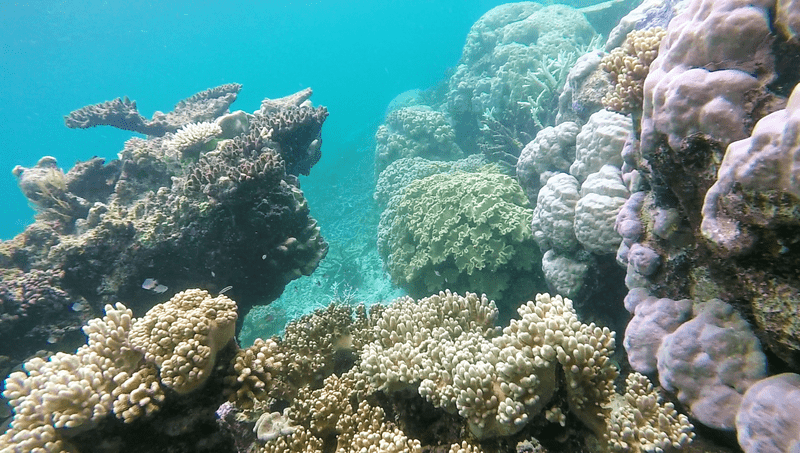It’s not the best time to be a coral reef — but not all is lost. Over the weekend, corals in the Great Barrier Reef spawned, and it was the biggest spawn event we’ve seen in recent years.

Despite extensive damage caused by bleaching events over the last few years, the Great Barrier Reef isn’t ready to throw in the towel just yet. Over the weekend, it engaged in the largest spawning event recorded in recent years. Coral spawning occurs in the Reef in the week after the November full moon, when water temperatures remain around 27 to 28°C. Soft corals being release egg and sperm bundles into the ocean for fertilization, followed by hard corals.
The seed is strong
“The corals are really looking spectacular since the bleaching events of 2016 and 2017,” said Stuart Ireland, a marine biologist from Calypso Productions who filmed the event.
“There was coral spawn everywhere last night. It was like a grey haze with beautiful pink bundles going up; it was a magical night. It’s a testament of how resilient the Great Barrier Reef really is.”
During the spawning period, millions of coral eggs become fertilized and go on to develop into the next generation of coral. The event is vital for the health of the reef. It ensures genetic diversity in individual species and spreads species out throughout the reef. Since corals are immobile, this is their only chance to ‘spread far and wide’ and settle into free spaces.
Typically, these events take place at night. However, the unique conditions this year led to a daytime spawning, explained Russel Hore, a Reef Bio Research Manager at Quicksilver Port Douglas, for Newsport. He adds that there’s a very good chance we’ll see a second spawning in December.
“We expect to see more pressures in the future, but the Great Barrier Reef’s size, complexity and huge biodiversity makes it a very strong ecosystem,” Ireland explains. “The reef has shown us that she is not lying down, she is doing extremely well and fighting for the future.”
The strong spawning event is particularly encouraging as the Great Barrier Reef, despite being the largest coral reef system in the world, is hard-pressed by rising sea temperatures linked to climate heating. Mashable India reports that researchers plan to use this event to restore dead parts of the reef, via the Coral Larval Restoration Project. The project’s page describes it as a “combination of enhanced techniques, aimed at both repairing the reproductive life cycles of corals and re-establishing breeding populations on damaged reefs by ensuring more naturally-produced larvae survive to adulthood.”
However, project leader Professor Peter Harrison said that the Project is, in effect, a bid to buy extra time for corals in the Great Barrier Reef. Climate action, he told Mashable India, is the only way to ensure that reefs will see the future.






